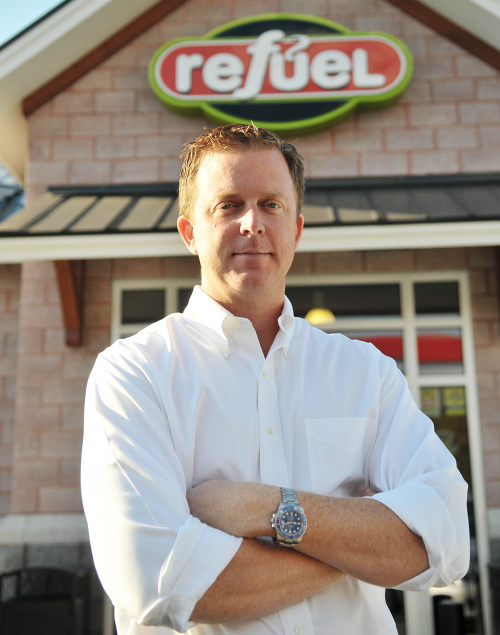The SSCS Interview: Mark Jordan of Refuel, Inc. (Part 1)
The Art of Food Service

Mark Jordan, President of Refuel, Inc.
SSCS customer Mark Jordan, President of South Carolina-based Refuel, Inc., has a reputation as a successful, progressive C-store owner, in no little part because of his auspicious foray into Food Service Management. He has used Food Service to great advantage in his three current stores, with a fourth set to open this month and a fifth scheduled to start construction this coming January. Not only does Food Service build Refuel, Inc.’s profitability, it creates meaningful market distinction for the company, a key in its development as a strong independent regional brand.
As is often the case with entrepreneurs, Jordan’s Food Service approach wasn’t an immediate success. Jordan himself will tell you that he made more than a few missteps on his way to creating a leading Food Service program. He learned from those mistakes, however, and continues to refine his approach even as it flourishes.
We asked Mark if he would take a few minutes to share some of his expertise with blog readers, and the result is this two-part interview, which we will run today and tomorrow.
SSCS: Before we talk about Food Service specifically, tell us a little bit about your business and how it evolved.
Mark Jordan: I started in business for myself in 1999 after working for a pretty good-sized petroleum retailer that owned and operated multiple sites. I built a number of stores and then the company was bought out by one of the public chains in 2005. I developed a number of stores for that interest in the time it took for my non-compete agreement to expire. I started Refuel, Inc. in 2008.
When I started Refuel, I tried to take everything I learned from those previous opportunities, especially what I could do better, and use that experience to the benefit of the stores we were about to build.
It soon became clear that tobacco rapidly was becoming the new Blockbuster Video. It likewise became obvious that gasoline margins were unstable—to say the least. I couldn’t see anything other than Food Service as replacing the gross profit and sales being lost in the other two areas, so we based Refuel around it. We’ve learned a lot of hard lessons, but we’re enjoying it now, and starting to do pretty well with it.
SSCS: Give us an idea of the scope of your Food Service program; what would stand out to a typical consumer?
MJ: I think the typical consumer would immediately notice a difference. Our stores are all brand new and they have been designed to accommodate Food Service, which means they are larger buildings. The layout is proprietary and Food Service is integrated into the store structure; it is not “bolted on”. Where a normal sales counter might end, ours continues to provide the real estate necessary to do justice to the Food Service items we offer. We have TV monitors displaying menu choices, hot food displays—all incorporated to look inviting and draw the customer in.
We’ve been selling hot dogs and tornadoes, but are about to discontinue them because they don’t make enough money for us—we can’t sell enough of them relative to the waste they generate to make it worth our while. Part of being a success in this area is not being afraid to tweak your Food Service offerings consistently based on what you see working and what you see not working.
SSCS: What are some highlights of your Food Service program?
MJ: We offer salads and sandwiches made in-house; fried chicken, including chicken tenders and chicken wings; and boiled peanuts which is a favorite of our Southern market. We’ve begun experimenting with pizza and we expect to do more with it as we move forward.
SSCS: What were the biggest challenges in getting Food Service off the ground?
MJ: The biggest challenge is understanding food costs and how they determine what kind of profit you make on an item. You can’t have a complicated menu; that makes tracking food costs harder. You also need to make sure that you can use an individual ingredient in multiple items. That helps you leverage those ingredients most profitably and contributes to the kind of simplicity I mentioned.
You’ve only got your customer in your store for two or three minutes. They’re not going to wait around. What you have to offer has to be flawlessly executed.
In terms of accounting, it’s almost like you have to forget everything you know about retail and think the opposite.
In part 2 of this interview, Mark elaborates upon his last tantalizing comment and provides some sage advice for those who are thinking about starting or expanding a Food Service program. Click here to read it.





Recent Comments